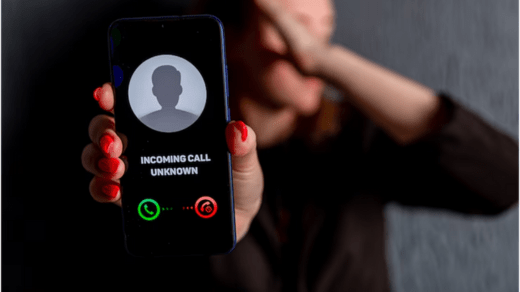How to Handle and Report Phone Harassment

The constant buzz of your phone can be a source of information, connection, and even entertainment. But what happens when that ring transforms into a source of stress and anxiety? Unwanted phone calls, especially those of a harassing nature, can be a serious disruption to your life. This article equips you with the knowledge to handle and report harassing phone calls, taking back control of your phone and your peace of mind.
Identifying Harassment
Not every unwanted call qualifies as harassment. Here’s what defines a harassing phone call in the legal sense:
- Frequency and Severity: Harassment involves repeated, unwanted calls that cause you distress or invade your privacy. A single call, even if annoying, might not be enough.
- Threats and Obscenity: Calls containing threats of violence, intimidation, or obscene language are clear examples of phone harassment. These calls can be not only frightening but potentially dangerous.
- Unwanted Contact: Even if non-threatening, persistent calls from someone you’ve requested no contact from can be considered harassment. This could be a debt collector exceeding legal communication limits or a persistent telemarketer ignoring your requests.
Strategies for Handling Harassing Calls
When faced with a harassing phone call, the best course of action is often not to engage:
- Don’t Answer: If you don’t recognize the number, let the call go to voicemail. Engaging with the caller can encourage further contact.
- Don’t Respond to Voicemails: Unless the voicemail contains a legitimate reason for contact (e.g., a missed delivery notification), don’t respond. Responding can confirm your number is active and encourage further calls.
- Hang Up Immediately: If the call gets through, hang up immediately. Don’t argue or engage with the caller, as this could escalate the situation.
Documenting the Calls: Gathering Evidence for Action
If the harassment persists, it’s crucial to document the calls as evidence:
- Note Details: Keep a detailed log of the calls, including the date, time, phone number (if displayed), and the content of the calls (if safe to do so).
- Screenshots and Voicemails: Save screenshots of caller ID displays (if possible) and any threatening voicemails. These can be valuable evidence.
- Consider Recording (if Legal): In some states, recording phone calls with one-party consent (meaning your own) is legal. Check your state’s laws before attempting this.
Reporting the Harassment: Taking Back Control
With documented evidence, you can take action to stop the harassment:
- Report to the FCC: File a complaint with the Federal Communications Commission (FCC) for violations of the Telephone Consumer Protection Act (TCPA) which restricts telemarketing calls, robocalls, and automated text messages.
- Contact Your Phone Carrier: Inform your phone carrier about the harassment. They might offer solutions like call blocking or tracing the origin of the call.
- Consider Legal Action: Depending on the severity of the harassment, consulting with an attorney might be necessary. They can advise you on legal options like a cease-and-desist letter or a restraining order.
Understanding the Exceptions
While phone harassment is a serious issue, it’s important to distinguish it from legitimate calls:
- Debt Collectors: The Fair Debt Collection Practices Act (FDCPA) restricts the time, frequency, and manner in which debt collectors can contact you. If a debt collector is harassing you, report them to the Consumer Financial Protection Bureau (CFPB).
- Lawyers: Lawyers, including car accident attorney, must adhere to professional ethics codes regarding communication with potential clients. If a lawyer’s calls become harassing, you can report them to the state bar association.
Conclusion
- Report Spam Calls: Report unwanted calls to the FTC. This helps track scam activity and identify potential perpetrators.
Call Blocking Apps: Consider using reputable call-blocking apps on your smartphone. These apps use various methods to identify and block suspected spam calls.



